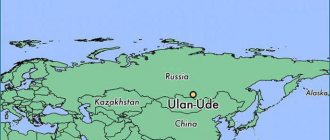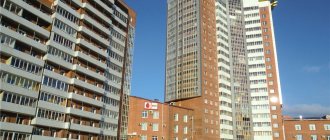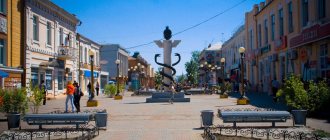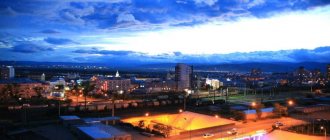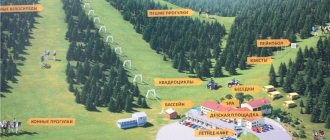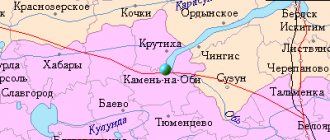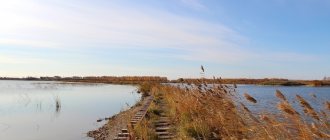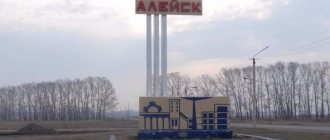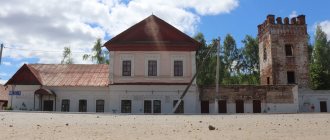From Verkhneudinsk to the capital of Buryatia
The name of the administrative center, unusual for the Russian language, evokes associations with Central Asia or Mongolia. But that's not true. Ulan-Ude , preparing to celebrate its 350th anniversary, became the center of Buryatia in the new Russian history - in the mid-30s of the twentieth century, the city of Vehneudinsk was renamed to Red Noon - this is how today’s name of the capital of the Buryat Republic is translated.
And the story began almost three and a half centuries ago and is connected with the Cossack winter hut, which was built to collect yasak from the local Tungus population. The Buryats and Mongols did not pay taxes. A couple of decades later, a royal decree ordered the construction of the Udinsky fort on this site, marking the beginning of suburban life. In the first third of the eighteenth century, the fort was renamed the city of Verkhneudinsk. The territory begins to be built up as an urban area and becomes part of the Irkutsk governorship.
The next century was marked by the further development of the urban settlement, the construction of stone houses, a guest courtyard, the appearance of industrial and craft enterprises, and a railway station.
By the beginning of the twentieth century, about three dozen educational institutions were operating in the city, the first cars and telephone communications appeared. By the decision of the revolutionary authorities, the city becomes the capital of the newly created Far Eastern Republic, then the Baikal Governorate, and, finally, the Buryat-Mongolian Autonomous Soviet Socialist Republic. In the post-Soviet period, Ulan-Ude received the status of the administrative center of the Republic of Buryatia.
Crime
As for crime in Ulan-Ude, we can say that everything is relatively calm, despite some unpleasant incidents. Actually, just like in any other more or less developed city. Major incidents, shootings, bank robberies and consistent car thefts are practically non-existent. And if it does happen, then soon the culprit is found, the damage is compensated, and in the future everything is calm.
Climate and ecology of Ulan-Ude
If you like hot summers and bitter cold in winter, you will love the sharply continental climate of the capital city. There have been cases in history when in January the thermometer dropped to 54 degrees. The absolute summer maximum is 40 degrees. The sun shines almost 260 days a year, but the rainy days can be counted on one hand and there is 265 millimeters of precipitation per year. Mainly in July and August. Air humidity does not exceed 65 percent.
Despite the fact that the climate in the city is arid, it was plagued by numerous floods in the 19th century, until a large shaft was built to separate the Uda River from the urban settlement.
Earthquakes have also occurred; the capital is located in a seismically active zone due to its proximity to Lake Baikal (130 kilometers). Over the past decade, up to 150 tremors of small amplitude have been observed. They did not cause casualties or destruction.
The capital of Buryatia boasts clean air in the surrounding area; there are a large number of parks and green areas that can effectively combat the negative impact on the environment; there is a lot of motor transport in the city, and there are traffic jams on the central streets. And yet, the air is so transparent and clean that you can see mountain outlines tens of kilometers away from the city. Citizens are not afraid to drink water from the tap.
Population of Ulan-Ude
According to the rating of 1,100 Russian cities, the capital of Buryatia ranks 42nd in terms of population, 453 thousand people. Experts predict that it may become a big city in the foreseeable future. For this purpose, a municipal demographic program has been adopted, aimed at creating comfortable living conditions for the indigenous population and attracting labor resources from the countryside of the republic and other regions of Russia.
Representatives of 60 nationalities live here. Among them:
- Russians;
- Buryats;
- Mongols;
- Bashkirs;
- Evenks;
- Tajiks;
- Uzbeks;
- Belarusians;
- Ukrainians;
- Lithuanians;
Ulan-Ude is one of the few Russian cities where the male and female population is at parity. The female population predominates by a few percentage points. In recent years, more boys have been born. The population below working age is more than 20 percent. 62 percent of the capital’s residents are of working age (more than 180 thousand citizens), among them the number of people with professional education is growing. These indicators are considered the best among the regions of Siberia.
The average cost of living for the population is 8.5 thousand rubles. For pensioners, the minimum basket is set at 6.6 thousand rubles. The average salary in the economy reaches 32 thousand rubles, according to 2014 data.
The unemployment rate in 2015 is within 1.42 percent, but in the second half of the year a massive reduction is expected in budgetary organizations and in the civil service. About 2,500 people were recognized as unemployed, according to data at the beginning of 2015. There are enough vacancies in the labor market for more than three and a half thousand. The most popular specialties in the labor market are:
- car mechanic;
- mechanic;
- electrician;
- carpenter;
- tire production master;
- driver;
- mason;
- designer;
- marketer;
- administrator;
- a kindergarten teacher;
- real estate market specialist;
- insurance agent.
In 2014, the city created 4,500 new jobs in the following segments:
- wholesale and retail trade;
- services sector;
- tourism and hotel business;
- construction;
- cargo transportation.
General information and history of the city
Ulan-Ude was founded in the 17th century by Russian Cossacks, choosing a place on the mountain above the Uda River as their founding point, from which the construction and development of the city began in different directions.
Initially, the city was named Verkhneudinsk, as the opposite of another city located in the Irkutsk region (Nizhneudinsk). At the site of its foundation they erected a large memorial cross, which is called the “Zaudinsky stone”. Due to its convenient geographical location, Ulan-Ude is the main center of trade with Mongolia and China, as well as with the cities of Eastern Siberia.
Monument to Lenin in Ulan-Ude
Ulan-Ude has always been a multinational city, and already in the 18th century Russians, Jews, Poles, Buryats, Chinese, Tatars, Georgians, Armenians and other nations lived in it.
During its existence, Ulan-Ude rapidly developed and built up, and after the revolution of 1917, factories, food factories, and large engineering enterprises began to open in the city.
During the Great Patriotic War, military hospitals were built in which wounded soldiers were treated. A large number of monuments have been erected in memory of those times. At the Zaudinsky cemetery, a memorial was opened at the mass grave of soldiers who died in city hospitals.
Ulan-Ude from a bird's eye view
Budget and investments
The capital's budget revenues in 2015 will amount to 3.6 billion rubles. The third part of the expenses is aimed at developing education and preparing for the celebration of the 350th anniversary of the city. The budget deficit is planned to be kept within 10 percent of revenues of 300 million rubles. Interestingly, the city fathers plan to achieve a budget surplus by 2021. Primarily due to investment projects, both public and private. Since 2014, more than fifty promising projects have been implemented in the republic with a total capital investment of up to 250 billion rubles. The largest of them:
- construction of regional roads with a length of 40 kilometers;
- reconstruction of 200 kilometers of federal highways;
- reconstruction of 17 bridges with the construction of 9 entrances;
- construction of three autotourist complexes;
- construction of infrastructure for a tourist and recreational park with a complex of buildings in Podlemorye;
- fortification and hydraulic structures on the banks of the Selenga River;
- landscaping of urban areas and new buildings in the steppe zone;
- construction of production facilities for processing solid waste;
- expansion of the capital's airport runway;
- complex development of microdistricts of the capital in the southern direction.
Such large investments are aimed at improving the demographic situation in the region and increasing the living comfort of citizens. In the long term, it is calculated that the number of capital residents will double by 2027.
Districts and new buildings
There has been a noticeable acceleration in housing construction. If in 2006 less than one hundred thousand square meters were commissioned in the region, then in 2014 there were 207 thousand square meters or 2,400 apartments. For 2015, the government of the republic has set an ambitious goal of putting into operation at least 3,500 comfortable apartments. Massive construction is carried out mainly in the capital of the republic, where residents from rural settlements and other Russian regions are moving.
Immigrants are attracted by the number of jobs with decent salaries, the relative cheapness of life in comparison with Irkutsk, Chita and Novosibirsk, and affordable housing. The average price per square meter in the city does not exceed 40 thousand rubles. The average citizen's salary is enough to purchase one square meter of housing per month.
The capital's development policy has changed from spot compacting to high-rise blocks. In 2014, 17 hectares of city land were allocated for complex development for the implementation of the Housing for Russian Family program. As part of the state program, more than one hundred thousand square meters will be built at a price not exceeding 30 thousand rubles.
The city administration is putting up for auction land plots for individual housing construction: eight acres will cost new residents half a million rubles.
In the Oktyabrsky district, the following are attractive to citizens:
- Residential complex Nikolsky, consisting of high-rise residential buildings with underground parking. The complex is located near the center, near shopping centers, schools, kindergartens, and a clinic. At the construction stage, and it will be put into operation in 2021, the cost per square meter is negligible 33 thousand rubles.
- Residential complex Angara 2 offers apartments in five 16-story towers. Within walking distance of a market, school, clinic, university, kindergarten. There is a children's playground on the roof of the underground parking lot. A square meter of housing will cost 42 thousand rubles. All houses have been put into operation.
- Residential complex Favorite is located in the very center. You can get to any area of the city by public transport without transfers. A three-room apartment with an area of over 80 square meters in a brick house costs 3.2 million rubles.
- The Flagman residential complex is surrounded by the sights of the Mother of Buryatia monument, Selingovsky Bridge, Megatitan and Eldorado shopping centers. One-room apartments up to 40 square meters are valued at 1.7 million rubles.
There is no comprehensive residential development underway in the Zheleznodorozhny district of the capital, but in new buildings on Oktyabrskaya Street you will be offered many apartments starting from 45 thousand rubles. A plot of 6 acres for individual housing construction is available for 200 thousand rubles.
In the cottage village of Lesnaya Polyana (Sovetsky district), you can purchase real estate with an area of 150 square meters for only 1 million 150 thousand rubles under hot offers. A house with a rough finish and a plot of 8 acres in the same area will cost a new resident 1.35 million rubles. An apartment near the airport with an area of 33 square meters is being put up for auction for 1.2 million rubles.
Surprisingly, secondary housing in the capital is cheaper than new buildings. You can find an option from 20 thousand per square meter of housing.
Sights and culture
The main attraction of the capital is a bronze monument to the leader of the world proletariat, an almost eight-meter tall head of Lenin cast in bronze, rising on a high, more than six meters, granite pedestal. Its production took 42 tons of non-ferrous metal.
In the vicinity of the city, the main shrine of Russian Buddhists was erected, the Ivolginsky Datsan Khambyn Sume. Thousands of pilgrims and tourists come here to explore the unique temple complex. Guests can stay at a hotel on the territory of the monastery.
The Rinpoche Bagsha Buddhist Center houses the largest gilded Buddha statue.
The ethnographic museum, whose holdings occupy more than 40 hectares, introduces guests to the history of the peoples of Transbaikalia. Thousands of copies telling about the historical development of Buryatia are collected in one open-air place.
Walking along Lenin Street, the pedestrian part of which was named the Buryat Arbat, you will see the symbolic coat of arms of the republic - a marble sculpture with bronze snakes, the Rod of the god of trade Mercury and a cornucopia.
The sculptural composition Beauty of the Angara is installed near the Opera and Ballet Theater. The dance composition is dedicated to the outstanding ballet masters of Buryatia.
On the central street of Kuibyshev there is the Trinity Church of the late 18th century, the shopping arcade of the merchant Kurbatov. Here you can walk around the estate of the tradesman Burlakov.
The largest museums, theaters, and exhibition halls of the republic are concentrated in the capital. The national song and dance theater Baikal successfully tours around the world.
Guests of the city enjoy visiting numerous museums:
- Museum of the History of Buryatia, where the richest collection of Buddhist religious objects is collected;
- Museum of Nature of the Republic;
- Art Museum;
- Museum of Applied Arts.
Coat of arms
The coat of arms of Ulan-Ude is presented in the form of a golden French shield. It depicts a green overturned cornucopia, with leaves and scarlet fruits emanating from it. It faces the viewer's right. On top of it is a black Mercury rod.
The structure is topped with a tower crown with national ornaments and five battlements. The central clove depicts “soyombo” - a traditional Buryat symbol of eternal life. It is represented in the form of a circle, accompanied at the top by a flame with three tongues, and below by a crescent. At the bottom of the shield is the ribbon of the Order of the Red Banner of Labor.
The emblem was adopted by decision of the Ulan-Ude City Council of Deputies dated October 20, 2005 No. 261-32. Included in the State Heraldic Register of the Russian Federation under No. 2022.
Education
At the beginning of the 19th century, the population of the territory was not literate. There was only one public school, where they learned crafts and school basics. Today, a quarter of the capital's population are students of secondary specialized and higher educational institutions. There are over 80 secondary schools and the same number of kindergartens in the city. By 2021, according to the administration’s plans, there will be no queues in preschool institutions in the city. New kindergartens are being built in housing complexes in the south-eastern part of the city.
More than 35 thousand young people study in 17 universities of the republic: 5 state universities and 12 branches. Specialists are trained:
- Buryat State University;
- East Siberian State University of Technology and Management;
- Agricultural Academy;
- Institute of Public Administration
- Agricultural Academy
- Institute of Railway Transport.
Young people receive secondary vocational education in 17 technical schools, colleges and schools.
The city has the Buryat Scientific Center of the Siberian Branch of the Russian Academy of Sciences, industry research institutes, and a fruit and berry experimental agricultural station.
Map
| Ulan-Ude: maps |
Ulan-Ude: photo from space (Google Maps) Ulan-Ude: photo from space (Microsoft Virtual Earth)
| Ulan-Ude. Nearest cities. Distances in km. on the map (in brackets along roads) + direction. Using the hyperlink in the distance , you can get the route (information courtesy of the AutoTransInfo website) | |||
| 1 | Sotnikovo | 9 () | NW |
| 2 | Ivolginsk | 22 () | SW |
| 3 | Onokhoy | 32 () | IN |
| 4 | Turuntaevo | 41 () | WITH |
| 5 | Tarbagatai | 42 (52) | SW |
| 6 | Zaigraevo | 45 () | IN |
| 7 | Selenginsk | 53 (89) | NW |
| 8 | Kabansk | 68 () | Z |
| 9 | Kamensk | 70 () | Z |
| 10 | Mukhorshibir | 89 (118) | YU |
| 11 | Gusinoozersk | 95 (120) | SW |
| 12 | Petrovsk-Zabaikalsky | 106 (204) | SE |
| 13 | Babushkin | 118 (178) | Z |
| 14 | Elantsy (Irkutsk region) | 134 (636) | NW |
a brief description of
The city is located in Transbaikalia, in the valley of the river. Selenga, on its right bank, between the Khamar-Daban and Ulan-Burgasy ridges, 75 km east of Lake Baikal, 5532 km east of Moscow. The southern part of the city is crossed by the river. Uda (tributary of the Selenga). Pier (on the Selenga River). Railway junction lines and highways.
The climate is sharply continental. The average temperature in January is -24, in July +17. Precipitation is about 300 mm per year.
Territory (sq. km): 366
Information about the city of Ulan-Ude on the Russian Wikipedia site
Historical sketch
Founded in 1666 as the Cossack winter hut Udinskoye on the river. Uda for collecting yasak from the Evenks and Buryats. Hydronym Uda from the Evenki ud “calm, quiet flow.” In 1689, the Udinsky fort was erected.
Since 1690, the administrative center of western Transbaikalia. In 1735-1773 referred to as a suburb of Udinsk. Since 1775, the provincial city of Udinsk, since 1783, the district city of Verkhneudinsk, Irkutsk region, Irkutsk governorship (since 1796 - Irkutsk province). The definition of upper - in this case does not mean “in the upper reaches” (the city is located at the mouth, i.e. at the very bottom of the Uda River), but is given to distinguish it from the city of Nizhneudinsk, located in the middle reaches of the Uda River, the Angara basin (in Irkutsk region).
Since 1822 the district center of the Irkutsk province, since 1851 the center of the newly formed Transbaikal region.
The favorable economic and geographical position of Verkhneudinsk (the navigable Selenga River with a convenient pier, the highway to Kyakhta, etc.) contributed to the transformation of the city into a large trading center in Transbaikalia. Trade with China took place through Kyakhta and Verkhneudinsk.
In 1856, in the district town of Verkhneudinsk, Transbaikal region, there were 4 churches, 518 houses, 110 shops.
In 1899, the Trans-Siberian Railway passed through Verkhneudinsk.
Verkhneudinsk fair towards the end of the 19th century. had a turnover of up to 2 million rubles.
In April - October 1920, Verkhneudinsk was the capital of the Far Eastern Republic (FER). In 1921-22, the center of the autonomous region was Buryat as part of the Far Eastern Republic. Since 1923, the capital of the Buryat-Mongolian Autonomous Soviet Socialist Republic, in 1958-92. - Buryat Autonomous Soviet Socialist Republic.
In 1934, Verkhneudinsk was renamed Ulan-Ude - “Red Uda” (Ulan Buryat “red”, Ude is the Buryat name of the Uda river).
In 2009, the working villages of Zarechny and Sokol, as well as a number of rural settlements (12.5 thousand inhabitants), were included within the city limits (Sovetsky district). In addition, the village of Zabaikalsky (2.6 thousand inhabitants) is included within the Oktyabrsky district, the village of Mostovoy station (0.2 thousand inhabitants) is included within the Zheleznodorozhny district.
Municipal indicators
| Index | 1990 | 1999 | 2001 | 2003 | 2005 |
| Demography | |||||
| Number of births, per 1000 population | 16.1 | 9.9 | 11.2 | 13 | 13.8 |
| Number of deaths, per 1000 population | 9.5 | 12.6 | 13.7 | 14.3 | 14.7 |
| Natural increase (decrease), per 1000 population | 6.6 | -2.7 | -2.5 | -1.3 | -0.9 |
| Standard of living of the population and social sphere | |||||
| Average monthly nominal accrued wages, rub. | 0.327 | 1521 | 2918 | 5500 | 8676.4 |
| Average housing area per inhabitant (at the end of the year), sq.m. | 13.5 | 15.6 | 16.7 | 17.3 | 17.9 |
| Number of preschool institutions, pcs. | 144 | 75 | 73 | 74 | 75 |
| Number of children in preschool institutions, thousand people | 25.1 | 8.8 | 10.2 | 11.5 | 12.7 |
| Enrollment of children in preschool educational institutions (at the end of the year), as a percentage of the number of children of the corresponding age, % | 52 | 56 | |||
| Number of daytime educational institutions (at the beginning of the school year), pcs. | 68 | 80 | 80 | 79 | 79 |
| Number of students in daytime educational institutions, thousand people | 57.9 | 57.7 | 54.1 | 49.2 | 44.6 |
| Number of doctors, people. | 2304 | 2306 | 2390 | 2491 | 2500 |
| Number of nursing staff, people. | 4583 | 4101 | 4314 | 4978 | 4973 |
| Number of hospital institutions, pcs. | 23 | 25 | 21 | 23 | 23 |
| Number of hospital beds, thousand units | 6 | 4.8 | 4.5 | 4.6 | 4.5 |
| Number of medical outpatient clinics, pcs. | 39 | 33 | |||
| Capacity of medical outpatient clinics, visits per shift, thousand units. | 8.5 | 9.2 | 10.9 | 11.4 | 10.2 |
| Number of registered crimes, pcs. | 13868 | 15046 | 9301 | 13762 | |
| Persons who committed crimes were identified, persons. | 6602 | 5932 | 3948 | 4704 | |
| Economy, industry | |||||
| Number of enterprises and organizations (at the end of the year), pcs. | 949 | 8933 | 9726 | 7400 | 19775 |
| Number of operating enterprises by type of activity: mining (at the end of the year), pcs. | 3 | ||||
| Number of operating enterprises by type of activity: manufacturing (at the end of the year), pcs. | 138 | ||||
| Number of operating enterprises by type of activity production and distribution of electricity, gas and water (at the end of the year), pcs. | 73 | ||||
| Volume of shipped goods of own production by type of mining (in actual prices), million rubles. | 2003.7 | ||||
| Volume of shipped goods of own production by type of manufacturing (in actual prices), million rubles. | 14625.1 | ||||
| Volume of shipped goods of own production by type of production and distribution of electricity, gas and water (in actual current prices), million rubles. | 7874.1 | ||||
| Construction | |||||
| Volume of work performed by type of activity “Construction” (until 2004 - volume of work performed under construction contracts), million rubles. | 0.163 | 418.2 | 656.2 | 1442.4 | 2473.1 |
| Commissioning of residential buildings, thousand sq.m. of total area | 154.8 | 57.1 | 66.9 | 75 | 100.6 |
| Commissioning of residential buildings, apartments | 589 | 971 | 870 | 1015 | |
| Commissioning of preschool institutions, places | 90 | 0 | 0 | 0 | 0 |
| Commissioning of educational institutions, places | 1266 | 694 | 132 | 0 | 0 |
| Commissioning of hospital facilities, beds | 60 | 0 | 0 | 0 | 0 |
| Commissioning of outpatient clinics, visits per shift | 360 | 0 | 0 | 0 | |
| Transport | |||||
| Number of bus routes (in intracity traffic), pcs. | 33 | 40 | 33 | 44 | 26 |
| Number of tram routes, pcs. | 5 | 3 | 3 | 3 | 3 |
| Length of operational tram tracks (at the end of the year), km | 25.2 | 24.1 | 24.1 | ||
| Number of passengers transported by buses per year (in intracity traffic), million people. | 92.6 | 7 | 5.8 | 6 | 8.6 |
| Number of passengers transported by trams per year, million people. | 42 | 74.8 | 74.4 | 59.5 | 28.8 |
| Connection | |||||
| Number of telephone sets of the city public telephone network, thousand units. | 41 | 62 | 73 | 80.3 | 95.2 |
| Number of residential telephone sets of the city public telephone network, thousand units. | 26 | 51 | 59 | 67.2 | 80.3 |
| Number of payphones of the city telephone network (including universal ones), pcs. | 730 | 731 | |||
| Trade and services to the population | |||||
| Retail trade turnover (in actual prices), million rubles. | 6337.2 | 11206.4 | 16679.8 | 25825.9 | |
| Retail trade turnover (in actual prices), per capita, rub. | 16048 | 28450 | 43279 | 68144.2 | |
| Index of physical volume of retail trade turnover, % compared to the previous year | 112 | 113 | |||
| Index of physical volume of public catering turnover, % compared to the previous year | 100.5 | 103 | |||
| Number of stores, pavilions (at the end of the year), pcs. | 137 | 378 | |||
| Sales area of shops, pavilions (at the end of the year), sq.m. | 10856 | 23937 | |||
| Volume of paid services to the population (in actual prices), million rubles. | 0.143 | 623 | 1320.6 | 2814.6 | 6490.3 |
| Volume of paid services to the population (in actual prices), per capita, rub. | 0.4 | 1577 | 3359 | 7303 | 17125 |
| Volume of household services to the population (in actual prices), million rubles. | 0.032 | 21.9 | 42.5 | 73.4 | 208.4 |
| Volume of household services to the population (in actual prices), per capita, rub. | 0.067 | 55.6 | 108.1 | 190 | 550 |
| Investments | |||||
| Investments in fixed assets (in actual prices), million rubles. | 0.167 | 471.8 | 1110.4 | 2320.6 | 3104.9 |
| Share of investments in fixed assets financed from budgetary funds in the total volume of investments, % | 14 | 17.3 | 45.6 | 31 | |
Data sources:
- Regions of Russia. Main characteristics of the constituent entities of the Russian Federation: statistical collection. Goskomstat of Russia. - M:, 2003.
- Regions of Russia. Basic socio-economic indicators of cities. Statistical collection. Rosstat. - M:, 2005. p. 295
- Transport in Russia: Statistical collection. Goskomstat. - M:, 2003. pp. 110, 120
- Transport in Russia: Statistical collection. Rosstat. - M:, 2005. pp. 117, 127
- Regions of Russia. Basic socio-economic indicators of cities. 2006. Statistical collection. Rosstat. - M:, 2006. p. 291
Culture, science, education
Buryat Scientific Center of the Siberian Branch of the Russian Academy of Sciences with the Research Institute of Natural and Social Sciences, geological chemistry, and the department for research of biological active substances of Indo-Tibetan medicine.
Institutes: agricultural, pedagogical; East Siberian - technological and cultural.
Theatres: Buryat Opera and Ballet, Buryat Drama named after Kh. Namsaraev, Russian Drama named after A.F. Bestuzhev, dolls. Philharmonic.
Museums: history of Buryatia named after M.N. Khangalov, art named after Ts.S. Sampilov, ethnographic of the peoples of Transbaikalia, nature of Buryatia, geological.
Museums, galleries, exhibition halls
Evenki Local Lore Museum, Republic of Buryatia, Ulan-Ude, st.
Tsivileva, 9 Museum of Literature of Buryatia named after Khots Namsaraev 670000, Republic of Buryatia, Ulan-Ude, st. Sovetskaya, 27 Phone(s): 21-3722
Museum of Nature of Buryatia 670000, Republic of Buryatia, Ulan-Ude, st. Lenina, 46 Phone(s): (3012) 21-4149 21-9814 Website: https://muzeyrb.ru/
National Museum of the Republic of Buryatia 670000, Republic of Buryatia, Ulan-Ude, Profsoyuznaya st., 29 Phone(s): (3012) 213-299 Website: https://muzeyrb.ru/
Republican Art Museum named after Ts.S. Sampilova 670017, Republic of Buryatia, Ulan-Ude, st. Kuibysheva, 29 Phone(s): (3012) 21-4488 21-4393 Website: https://muzeyrb.ru/
Ethnographic Museum of the Peoples of Transbaikalia 670027, Republic of Buryatia, Ulan-Ude, village. Verkhnyaya Berezovka, 2a Phone(s) Website: https://www.emnz.ru/
Architecture, sights
Old urban areas in low riverine areas have partially preserved the regular layout of the late 18th century.
Odigitrievsky Cathedral (1714), Trinity Church (late 18th - early 19th centuries), Big and Small shopping arcades and Gostiny Dvor (1803-56, architect A.P. Losev), residential buildings in the classicist style and wooden houses decorated with carvings .
In the 20th century the foothill plain is built up. House of Soviets (1928-31, architect A.A. Ol), Buryat Opera and Ballet Theater (1947-52, architect A.N. Fedorov).
| Population by year (thousands of inhabitants) | |||||||
| 1856 | 3.4 | 1973 | 279 | 2001 | 369.6 | 2014 | 421.5 |
| 1897 | 8.1 | 1976 | 289 | 2003 | 359.4 | 2015 | 426.7 |
| 1926 | 29.4 | 1979 | 300.4 | 2005 | 352.6 | 2016 | 430.6 |
| 1931 | 44.0 | 1982 | 315 | 2006 | 347.8 | 2017 | 431.9 |
| 1939 | 125.7 | 1986 | 342 | 2007 | 343.0 | 2018 | 434.9 |
| 1956 | 158 | 1989 | 352.5 | 2008 | 340.8 | 2019 | 435.5 |
| 1959 | 175.2 | 1992 | 366 | 2010 | 377.1 | 2020 | 439.1 |
| 1962 | 196 | 1996 | 368.1 | 2011 | 404.4 | 2021 | 437.5 |
| 1967 | 227 | 1998 | 370.8 | 2012 | 411.6 | ||
| 1970 | 253.6 | 2000 | 370.4 | 2013 | 416.1 | ||
Healthcare
In addition to a developed network of clinics and hospitals, a unique state Center for Oriental Medicine with several buildings has been created in the city. The following services are provided here:
- bioenergetic diagnostics;
- biochemical studies;
- consultations with narrow specialists;
- treatment using Tibetan medicine methods;
- rehabilitation.
There are a number of private medical centers and offices in the capital of the republic. The Center for Oriental Medicine also provides a number of paid services.
